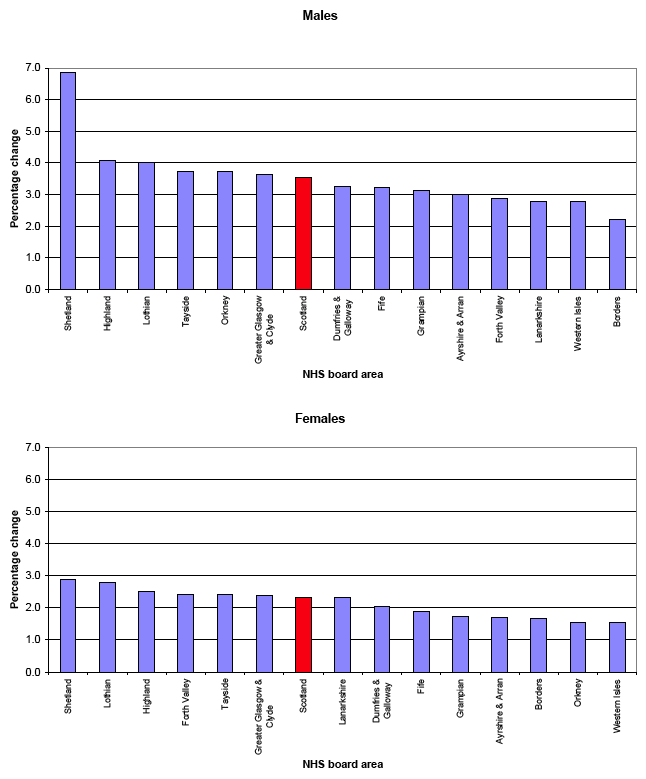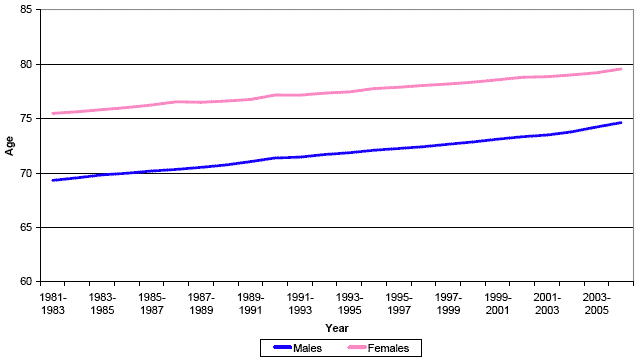
3.1.1 Figure 1 shows that the expectation of life at birth in Scotland has improved over the last 20 years or so. It has increased from 69.3 years for males and 75.5 years for females born in the period 1981-1983 to 74.6 years and 79.6 years respectively for those born in 2004-2006, an increase of 5.3 years and 4.1 years respectively.
Figure 1 Life expectancy at birth, Scotland, 1981-2006

3.1.2 Figure 1 also shows that the gap between males and females is slowly closing, dropping from 6.3 years in 1981-1983 to 5.0 years in 2004-2006.
3.1.3 Alternative, but very similar, results for Scotland are also produced by ONS. For more details see Section 4.1.
3.1.4 Figure 2 shows that Scottish men and women have among the lowest expectation of life at birth in the EU-251. The countries with lower life expectancy than Scotland were the Eastern European states which joined the EU on 1 May 2004. For Scottish males, expectation of life is almost 1 year lower than the EU average and, for females, it is almost 2 years lower. For both sexes, the expectation of life is about 4 years lower than the countries with the highest expectation of life.
Figure 2 Life Expectancy at birth, 2005, selected countries

3.2 Life Expectancy at Birth, 2004-2006
3.2.1 Table 1, Table 2 and Table 3 show life expectancy at birth in Scotland for 2004-2006 for council and NHS board areas.
3.2.2 For males, amongst the council areas, the lowest figure was for Glasgow City (70.5 years). The council area with the highest life expectancy for males was East Dunbartonshire (78.0 years), 7.5 years more than Glasgow City.
3.2.3 East Renfrewshire has the highest life expectancy for females (81.9 years), 4.9 years more than Glasgow City, the area with the lowest figure (77.0 years).
3.2.4 Of the NHS board areas, the lowest figure for both males and females was for Greater Glasgow & Clyde (72.5 and 78.2 years respectively). The highest was for Shetland for both males and females (76.6 and 81.5 years respectively).
3.2.5 Table 4 and Table 5 show expectation of life at an "exact age". This is the average number of years that those at this age will live thereafter. These extracts from period life tables are constructed from the estimated population in 2004, 2005 and 2006 and the total number of deaths registered in these years. The column headed lx shows the numbers who would survive to the exact age of x, out of 100,000 persons who, from birth, were subject to the mortality probabilities indicated by the death records for 2004-2006. The column headed exo shows the expectation of life, that is, the average number of years of life left to persons aged exactly x who are subject to the 2004-2006 mortality probabilities from age x onwards. For example, on this basis a male aged 80 living in Glasgow City could expect to live on average another 6.9 years, whereas a female aged 80 could expect to live on average another 8.4 years.
3.3 Life Expectancy at age 65, 2004-2006
3.3.1 Table 6 shows life expectancy at age 65 for Scotland and its administrative areas and has been ranked for ease of presentation. This shows that males aged 65 could expect to live a further 15.9 years and females a further 18.6 years if mortality rates remain the same as they were in the period 2004-2006.
3.3.2 For males and females, amongst the council areas, the lowest figure was for Glasgow City (13.8 years and 17.3 years respectively). The council area with the highest life expectancy at age 65 for males and females was Shetland (18.0 years and 20.5 years respectively), 4.2 years for males and 3.2 for females years more than Glasgow City.
3.3.3 Of the NHS board areas, the lowest figure for males was for Greater Glasgow & Clyde (14.7 years). The highest figure was Shetland (18.0 years), 3.3 years more than Greater Glasgow & Clyde.
3.3.4 Shetland NHS board area has the highest life expectancy at age 65 for females (20.5 years), 2.6 years more than Greater Glasgow & Clyde and Lanarkshire, the areas with the lowest figures (17.9 years).
3.4.1 Life expectancy at birth, like most statistics, is an estimate which is subject to a margin of error. The accuracy of the results can be indicated by calculating a confidence interval which provides a range of values within which the true underlying life expectancy would lie (with 95% probability).
3.4.2 The 95% confidence intervals for life expectancy at birth and at age 65 are given in Table 7 and Table 8, and are illustrated in Figure 3, Figure 4, Figure 5 and Figure 6 for council and NHS board areas within Scotland.
3.4.3 There is no simple "rule of thumb" for the size of confidence intervals, although it largely depends upon the size of the population, and so confidence intervals for areas with small populations tend to be wider. It is also worth noting that life expectancy results in these areas can be affected by the random variation in the number of annual deaths. This means that the results can be erratic and vary from period to period.
3.4.4 More information about the methods used to calculate the standard errors and confidence intervals used in this report can be found in the ONS methodology paper "Life expectancy at birth: methodological options for small populations". See Section 4.2.3 for how to access this report.
Figure 3 Life expectancy at birth, 95% confidence intervals for council areas, 2004-2006 (Males & Females)
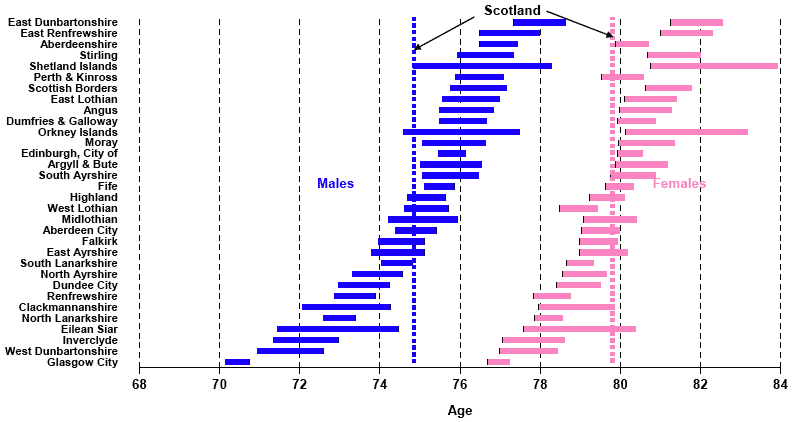
Figure 4 Life expectancy at birth, 95% confidence intervals for NHS board areas, 2004-2006 (Males & Females)

Figure 5 Life expectancy at age 65, 95% confidence intervals for council areas, 2004-2006 (Males & Females)
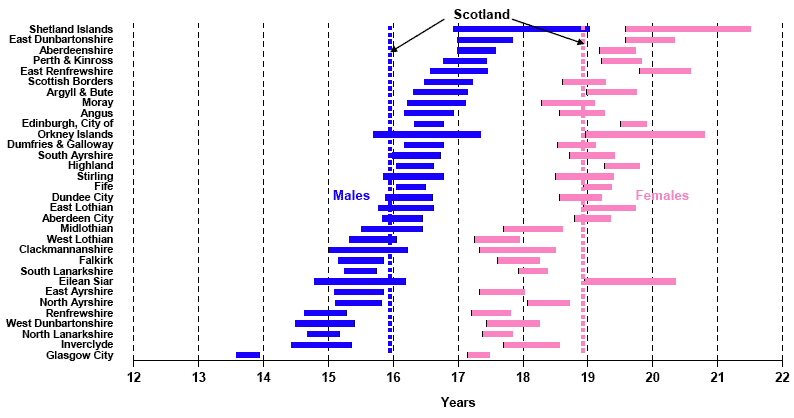
Figure 6 Life expectancy at age 65, 95% confidence intervals for NHS board areas, 2004-2006 (Males & Females)
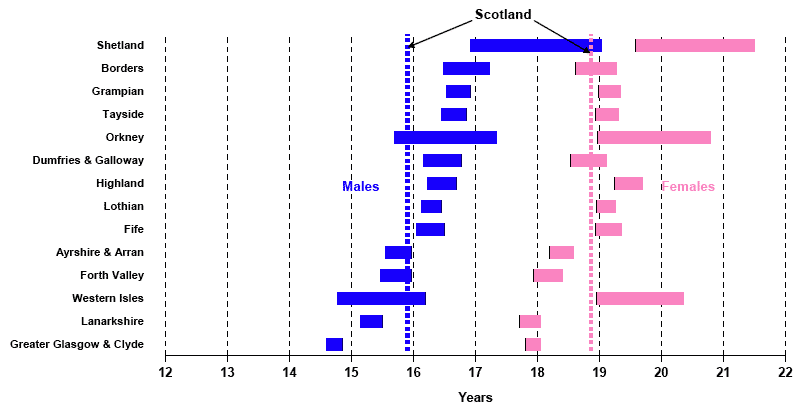
3.5 Comparisons between 1994-1996 and 2004-2006
3.5.1 Life expectancy at birth in Scotland has increased between 1994-1996 and 2004-2006, from 72.1 years to 74.6 years for males, and from 77.8 years to 79.6 years for females. Table 1, Table 2 and Table 3 also show the highest and lowest ranking council and NHS board area for both periods. The tables show the gap between males and females is closing, from 5.7 years in 1994-1996 to 5.0 years in 2004-2006. For council areas, the gap between highest and lowest areas for male life expectancy at birth remains the same at 7.5 years. For females, the gap is increasing (from 4.4 years in 1994-1996 to 4.9 years in 2004-2006).
3.5.2 The maps in Figure 7a and Figure 7b and the chart in Figure 7c show the percentage change in life expectancy over the 10 year period for council areas. For males, the Shetland Islands had the largest increase with 6.9 percent (4.9 years) and Clackmannanshire the lowest with 0.2 percent (0.2 years). For females, East Dunbartonshire had the largest increase with 3.4 percent (2.7 years) and East Ayrshire the lowest with 0.9 percent (0.7 years).
3.5.3 Figure 8 shows similar information for NHS boards. For males, Shetland had the largest increase at 6.9 percent (4.9 years) and the Borders the lowest with 2.2 percent (1.7 years). For females, Shetland had the largest increase with 2.9 percent (2.3 years) and Orkney and Western Isles the lowest with 1.5 percent (1.2 years).
3.5.4 Over the 10 year period the ranking of many council and NHS boards has changed (Table 1, Table 2 and Table 3). For males, amongst the council areas, the Shetland Islands has risen 20 places to 5th while Clackmannanshire has fallen 12 places to 27th. For females, Perth & Kinross and Stirling have risen 10 places to 4th and 9th respectively while Scottish Borders has fallen 8 places to 13th.
3.5.5 Of the NHS boards, Shetland has risen 11 places to 1st and Forth Valley has fallen 3 places to 10th for males. For females, Highland has risen 5 places to 3rd and Western Isles has fallen 4 places to 10th.
3.5.6 Of course, when confidence intervals for the results are taken into account, the rise and fall of the rankings over time are not exact, especially for areas with relatively small populations such as Orkney and Shetland. Confidence intervals for 1994-1996 are not presented here, but male and female figures are available from the Office for National Statistics (ONS) website through the following link:
http://www.statistics.gov.uk/downloads/theme_population/LE_Scotland_2006.xls
Figure 7a Percentage change in life expectancy at birth between 1994-1996 and 2004-2006, council areas, Males
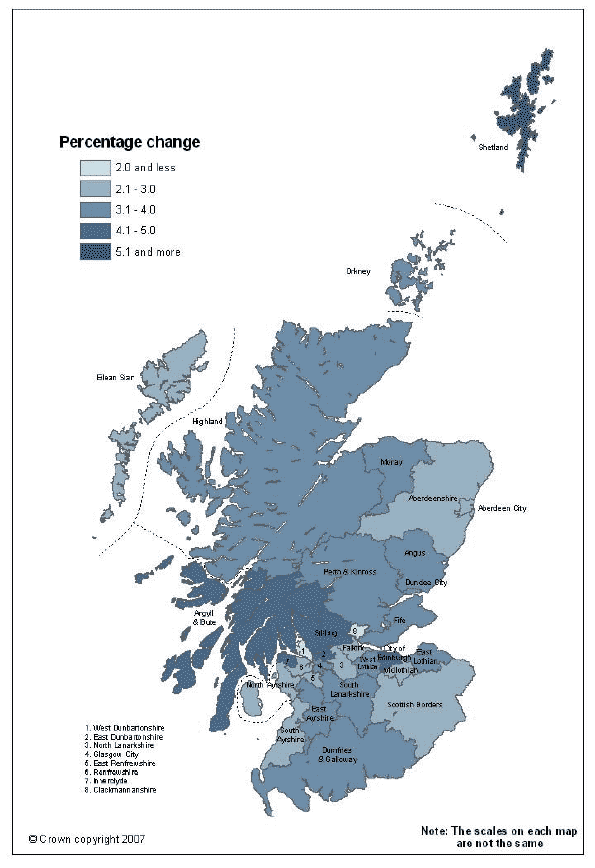
Figure 7b Percentage change in life expectancy at birth between 1994-1996 and 2004-2006, council areas, Females
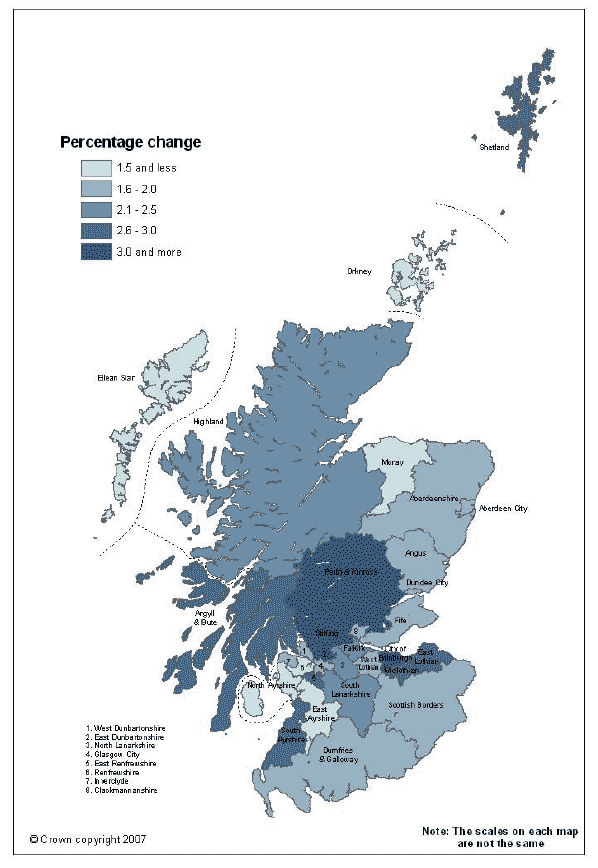
Figure 7c Percentage change in life expectancy at birth between 1994-1996 and 2004-2006, council areas, Males and Females
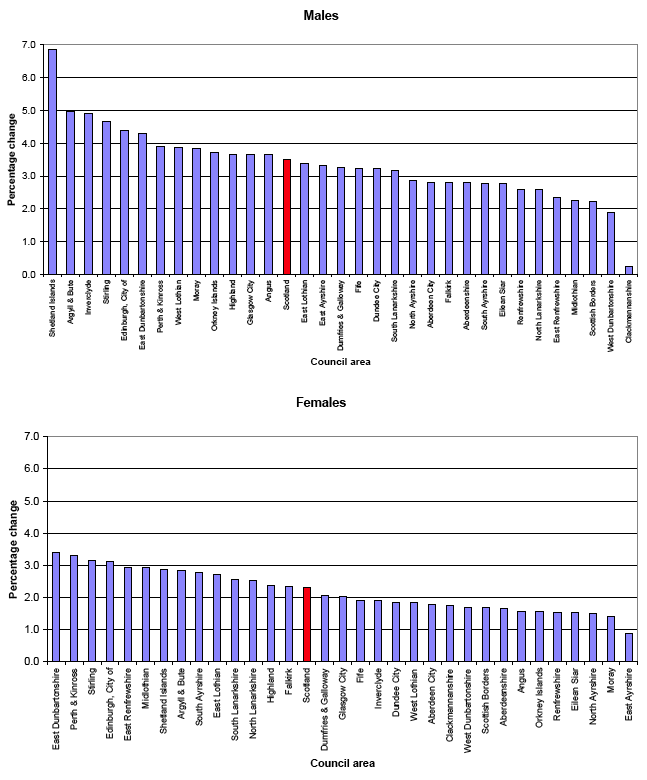
Figure 8 Percentage change in life expectancy at birth between 1994-1996 and 2004-2006, NHS board areas, Males and Females
